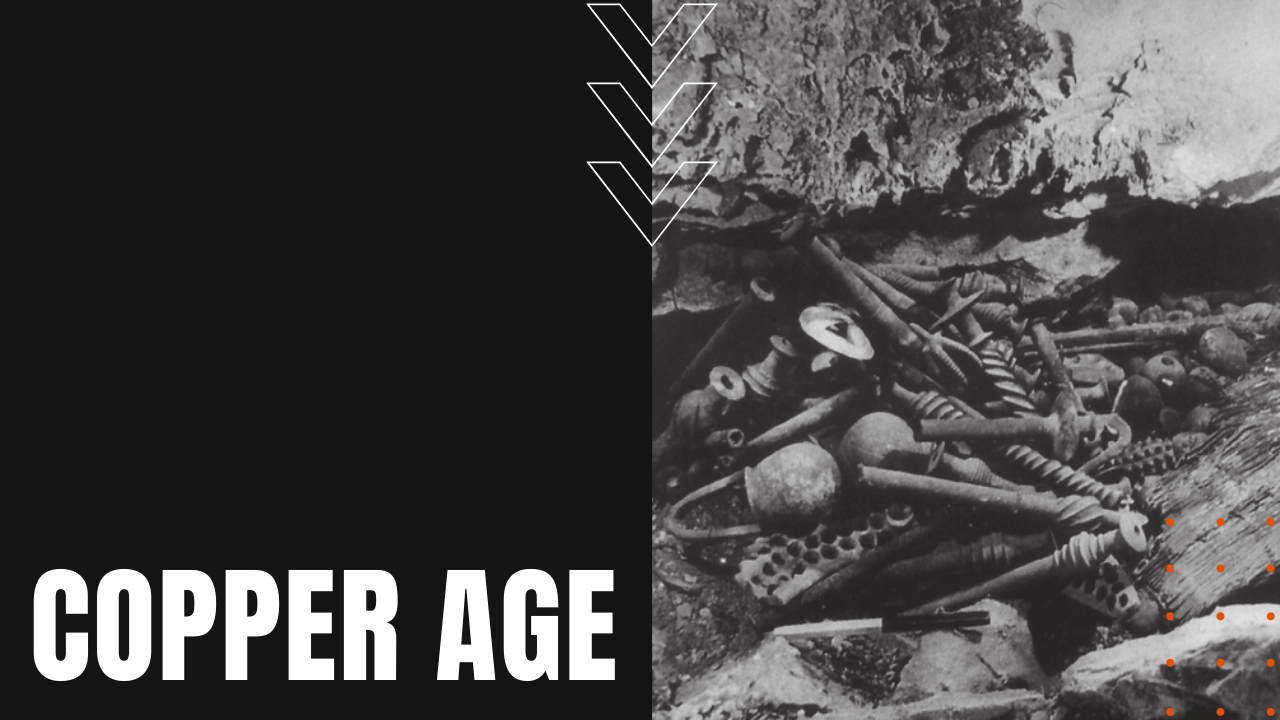The Copper Age of Early Man

Centered primarily in the Middle East and Europe, the 1,000-year-long Copper Age or Chalcolithic Period lasted from roughly 4500 to 3500 BCE, wedged between the Neolithic Period and Bronze Age of early man.
Distinguished by some of the earliest uses of copper and gold, early man fashioned a wide range of implements from tools to weapons to jewelry in an age before improved smelting techniques brought about the Bronze and Iron Ages to follow.
Civilization of the Copper Age
The period also saw the rise of city-states and polities headed by tribal chiefs, which imported raw metals from distant mines for the creation of tools, art and religious idols, at the same time witnessing the first examples of large-scale worker specialization in such pursuits as cheese production, olive and date farming, while others focused on the production of wool clothing, jewelry, pottery and religious crafts. The period also marked the first evidence of a class system between rich and poor, rulers and the ruled.
Nahal Mishmar Hoard
On March 22nd, 1961, archaeologist Pessah Bar-Adon repelled down a sheer cliff above the Dead Sea, discovering a remote cave filled with Copper Age treasures. Now known as the Nahal Mishmar Hoard, Bar-Adon discovered 442 different objects hastily concealed in a rock crevice, most likely from a shrine at Ein Gedi, some eight miles away.
The Nahal Mishmar Hoard contains 429 copper pieces employing the earliest known use of a complex smelting technique known as the lost-wax casting process, along with six hematite pieces, one stone piece, five hippopotamus ivory carvings and one elephant ivory carving.
Dating back to 4500 to 3600 BCE, the collection advanced scholars’ knowledge of early metallurgy techniques, while shedding light on the customs, religion and lifestyles of ancient man.
Copper Age Afterlife
Other scholars have examined Copper Age ossuaries, which highlighted early man’s important relationship between the living and the dead, positing that early man during the Copper Age needed an ongoing dialogue with their deceased ancestors to help them do the right thing. Fashioned mainly from clay and a few from stone, ossuaries were a form a “second burial” for the deceased, after a body was left outside for animals to skeletonize the remains—a practice that only existed in the Chalcolithic period, until the Jews of Israel briefly resumed the practice in the 1st century BCE, making the Copper Age an important leap forward in the slow advance of early man.
